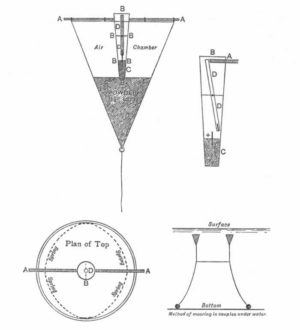Well, you see, I try and make the titles grab attention. Sorry. This post is another in the “cognitive psychology” theme. I’m becoming more certain that both “System 1” cognition, developed by experience and training, and System 2 cognition, careful slower pace thought, have key roles to play. At certain times in certain operations one or other is more important. In high intensity, high tempo operations, System 1 must be optimized – it is optimized by training and by experience and experience of others can help in developing appropriate SOPs and the monitoring of “system 1 “ EOD activities by experienced commanders/ mentors.
When a System 1 approach fails or the nature of the IED is unknown, a System 2 approach is needed. It’s at this point that I think my concern is focused, because I have seen operators struggle at this point and probably did struggle myself too on occasions. I really think the mind fools itself at this point, potentially, and it’s hard to switch from “One” to “Two” and then be certain you have switched. Also on an operation it’s difficult to develop the optimal circumstances such that your mind can “switch”. An example:
Here are some simple System 1 examples:
2+ 2 = ?
Bread and ?
Your answers are all instinctive, you don’t need to think about it. Let me now give you what is likely a System 2 problem:
23 x 17 = ?
Ok you have to think about that but most of us (!) could probably do that in our heads – it might take 10 or 20 seconds. That’s your system 2 working.
Now , an experiment. Stand up from your desk, and start jogging on the spot reasonably vigorously. After ten seconds try and compute 31 x 27 in your head, while jogging. Do it now.
OK so I bet you had to stop jogging to do it. This demonstrates that you physically cannot do “System 2” thinking while actively physically engaged in something else. This means you cannot do “System 2” threat assessments while in a bomb suit working towards a suspect IED, carrying tools, weapons and clearing your way working on absorbing your surrounding environment. You can only do System 2 threat assessments in the ease and comfort of your ICP, without other distractions. I think that’s quite important. If you think you can do System 2 threat assessments while working in your EOD suit you are fooling yourself, and the mind is easily fooled. Interestingly there is a physiological activity that can be spotted when the brain is engaged in “System 2” and that is a dilation of the pupils, but that’s not practical to monitor. I’m also finding some interesting other hints – System 2 is also adversely affected, directly, by low blood sugar levels.
So for now, here is what I recommend:
A. Discipline yourself to encourage “System 2” analysis if the task demands it. It is probably demanded if you do not know the nature of the IED or if an SOP action fails to have the desired effect or if something unexpected occurs.
B. Be “self aware” of the likelihood that you will fool yourself and actually use System 1 thinking when you think you are doing System 2. Know that if you are in your bomb suit down range you CANNOT be doing System 2. If you find something unexpected return to the ICP to think about it. A personal bug bear now which is comms while in a bomb suit. I abhor this as it simply doesn’t help, it extends the time of the operator is in the danger zone, and if the operator is providing commentary on what he is seeing HE or SHE IS NOT THINKING. Every time I see this used, I never see the value, it simply is pointless, dangerous effort.
C. Maximize your System 2 potential by finding time and space in your ICP , uninterrupted by other things such as comms, equipment prep etc. Other people do that , not because it is not important but because it is important that the operator has time to think. If an operator is preparing equipment, that’s a bad sign.
D. Commanders, recognise the adverse effect of fatigue on system 2 thinking. There is clinical evidence to show the consequences of fatigue on this aspect of cognitive performance.
E. Eat a bar of chocolate on your way to a task to keep your blood sugar level up. (!)
So …nothing startling there for many but perhaps some reinforcement of current drills, and some reasons why some current drills work. But more to come which I think will be new techniques to encourage System 2 cognitive processes where there are some seeds of ideas developing in my little head…

